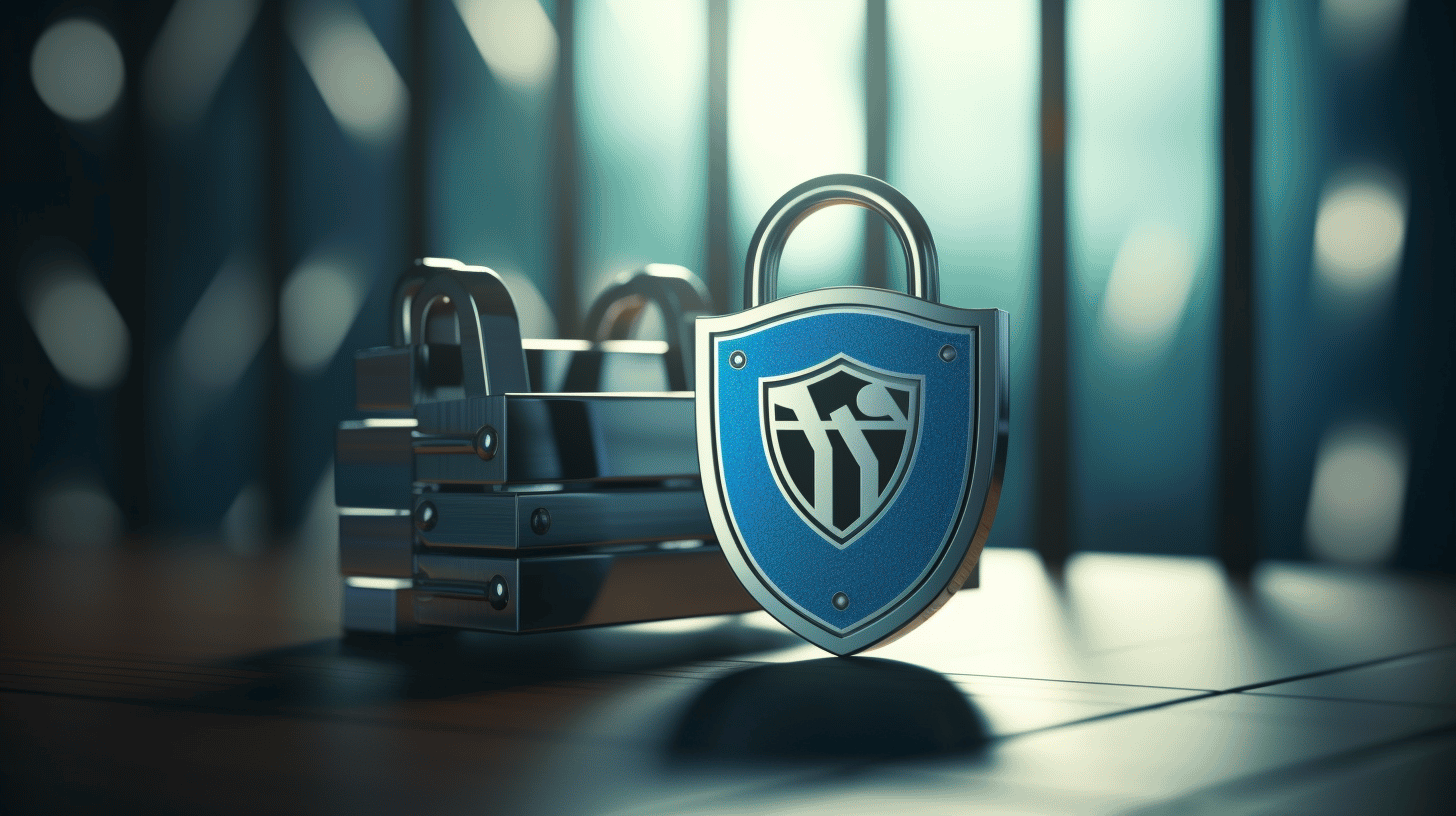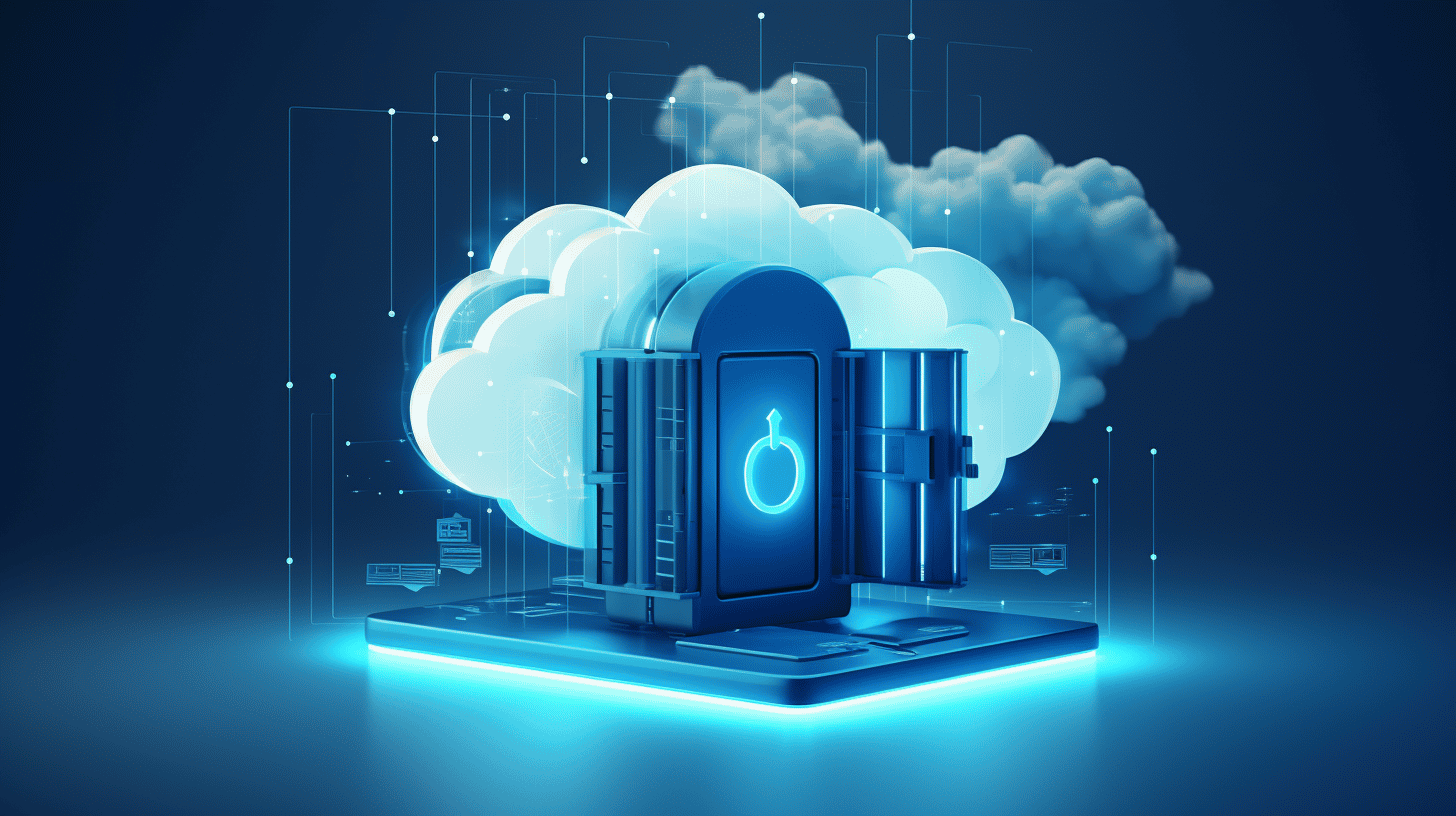In today’s digital landscape, website security is of utmost importance. With the constant evolution of cyber threats, it is crucial for website owners to take proactive measures to protect their online assets. This is especially true for WordPress users, as WordPress powers over 35% of the internet, making it an attractive target for cybercriminals.
In this article, we will delve into the world of website security and provide essential tips for WordPress users to maximize their website security. Whether you are a small business owner, a blogger, or an e-commerce entrepreneur, these tips will help safeguard your website and protect it from potential threats.
So, buckle up and get ready to fortify your WordPress site against cyberattacks that could compromise your data, reputation, and online business. Let’s get started! 👊
Overview of Cybercrime Statistics
Imagine a world where cybercrime runs rampant, posing threats to businesses and individuals alike. This unfortunate reality is more prevalent than we may think. Cybercrime, defined as any criminal activity conducted through the use of computers or the internet, has become a pressing global concern. In this section, we will explore some eye-opening cybercrime statistics to shed light on the scope and impact of this growing issue.
Global Cost of Cybercrime
It’s no secret that cybercrime comes with a hefty price tag. In fact, it is estimated that cybercrime will cost businesses a staggering $10.5 trillion annually by 2023[1](https://www.thomasnet.com/articles/other/how-much-money-does-cybercrime-cost-the-economy/). This mind-boggling figure highlights the immense financial burden faced by organizations around the world, from small businesses to multinational corporations.
Growth of the Cybersecurity Industry
As cyber threats continue to evolve, so does the need for robust cybersecurity measures. To combat the rising tide of cybercrime, the cybersecurity industry has seen significant growth. Currently, it employs an estimated 5.5 million people globally[2](https://www.cisco.com/c/en/us/products/security/security-reports.html). These cybersecurity professionals work tirelessly to safeguard networks, systems, and data from malicious actors.
Frequency and Impact of Cyberattacks
It’s alarming to think about just how frequently cyberattacks occur. On average, websites experience a staggering 94 attacks per day[3](https://www.securitymagazine.com/articles/95291-global-rate-of-cyberattacks-increased-by-353-in-one-year). This means that while you’re enjoying your morning coffee, numerous attempts are being made to breach the security of websites worldwide. These attacks can have far-reaching consequences, including financial losses, reputational damage, and even legal repercussions.
Trends in System Intrusions
System intrusions, where unauthorized individuals gain access to computer systems and networks, have been on the rise. In 2016, the percentage of reported system intrusions stood at 14%. Fast forward to 2023, and that number has nearly doubled to 30%[4](https://resources.forescout.com/wbr-2020-global-impact-report-americas?cid=7015G0000019gxSQAQ&utm_campaign=2020us-ww-wbrgim-americas-paidsearch-dac&utm_medium=Paid%20Search&utm_source=google&utm_content=brand&gclid=CjwKCAjwhYOFBhBkEiwASF3KM1IevfLFkpBtoHtHum7ln7Hyfn_eI2VX3pWkTQ7PhR95-xxRW3HNpRoCLC0QAvD_BwE). This significant increase underscores the need for robust cybersecurity measures to protect sensitive information and prevent unauthorized access.
Data Breach Costs
One of the most damaging consequences of cybercrime is data breaches. In 2023, the global average cost of a data breach reached a staggering $4.45 million[5](https://www.ibm.com/security/digital-assets/cost-data-breach-report/#/). This represents a 15% increase over the course of just three years. These costs take into account various factors, including incident response, loss of business, and the potential for legal repercussions.
Take Control of Your Website Security
In an increasingly digital world, protecting your online presence is of utmost importance. The consequences of cybercrime can be devastating, both financially and reputationally. To learn more about the steps you can take to enhance your website’s security, check out the comprehensive guide on “Mastering Website Security”[6](https://managed-wp.com/blogs/mastering-website-security-protect-your-business-with-managed-hosting/). It offers valuable insights and practical tips to safeguard your business from the ever-growing threat of cybercrime.
Most Vulnerable Sectors
In today’s digital age, cyber threats are prevalent and constantly evolving. No industry is immune to these attacks, but certain sectors are particularly vulnerable. This section will explore two industries that have become prime targets for cybercriminals: the finance sector and educational institutions.
Finance sector
The finance sector, including banks, insurance companies, and investment firms, is an attractive target for cyberattacks due to its vast wealth of sensitive financial data. Here are some key points to consider:
- 🎯 According to industry reports, the finance sector ranks as the second most targeted industry for cyberattacks, just behind the healthcare sector.
- 💸 The motive behind these attacks is often financial gain. Cybercriminals aim to exploit vulnerabilities and gain unauthorized access to financial systems or steal valuable customer information.
- 🚫 Phishing campaigns are a common tactic used against the finance sector. These campaigns attempt to trick individuals into revealing confidential information, such as login credentials or financial details.
- 🛡️ To combat these threats, financial institutions invest heavily in cybersecurity measures, including strong encryption, multi-factor authentication, and robust firewalls.
- 🌐 It is crucial for customers to remain vigilant and take necessary precautions, such as regularly updating passwords, not sharing sensitive information through unsecured channels, and being cautious of suspicious emails or calls.
Educational Institutions
Educational institutions, including schools, colleges, and universities, may not immediately come to mind when thinking about cyberattacks. However, these institutions possess valuable data, making them attractive targets. Here’s what you need to know:
- 🎯 Digital attacks on educational institutions are on the rise, with significant consequences for both students and institutions themselves.
- 🏫 In a recent study conducted by source, it was found that 29% of attacks on educational institutions originated from vulnerability exploitation, while 30% were a result of phishing campaigns.
- 🔑 Vulnerability exploitation involves exploiting weaknesses in software or systems used by educational institutions, allowing hackers to gain unauthorized access to student records, personal information, and even financial data.
- 💌 Phishing campaigns targeting educational institutions often aim to collect sensitive information, such as usernames, passwords, or financial details, by impersonating trusted sources like schools or educational organizations.
- 🛡️ Educational institutions are taking steps to enhance their cybersecurity protocols. This includes regular software updates, employee training on security best practices, and implementing robust threat detection and prevention systems.
Overall, the finance sector and educational institutions must remain vigilant in the face of cyber threats. By investing in robust cybersecurity measures and educating users about potential risks, these sectors can better protect themselves and their stakeholders from falling victim to cyberattacks.
Prevalence of Cybersecurity Threats in Websites
🔒 Introduction 🔒
In today’s digital age, websites have become an integral part of our lives. From online shopping to social networking, we rely on websites for various purposes. However, with the growth of the online landscape, there is also a significant rise in cybersecurity threats that target these websites. It is crucial to understand the prevalence of these threats in order to take appropriate measures to protect ourselves and our online assets.
🕵️♀️ The Reality of Cybersecurity Threats 🕵️♀️
Recent studies have unveiled some alarming statistics regarding the prevalence of cybersecurity threats in websites. One study found that a staggering 18% of websites are found to contain critical cybersecurity threats[data1]. This means that nearly one in five websites may have vulnerabilities that cybercriminals can exploit. These threats pose a significant risk to the security and privacy of users who visit these websites.
📈 Most Common Types of Cybersecurity Threats 📈
To effectively combat cybersecurity threats, it is essential to be aware of the most common types that websites face. Here are a few examples:
- Malware 🦠: Malicious software, such as viruses, worms, or ransomware, can infect a website and compromise its security. Malware can be distributed through infected files or links, targeting unsuspecting visitors.
- Phishing Attacks 🎣: Phishing attacks involve tricking users into revealing sensitive information like passwords, credit card numbers, or personal data. Cybercriminals create fake websites that mimic legitimate ones to deceive users into disclosing their confidential information.
- SQL Injection 🆎💉: SQL injection attacks exploit vulnerabilities in a website’s database by injecting malicious code. This can allow hackers to gain unauthorized access to sensitive data stored in the database.
- Cross-Site Scripting (XSS) ✍️😈: XSS attacks occur when malicious scripts are injected into a website and executed in users’ browsers. This can lead to the theft of sensitive information or the manipulation of website content.
💻 Protecting Websites from Cybersecurity Threats 💻
Given the prevalence of cybersecurity threats, website owners must prioritize the security of their online platforms. Here are some important measures that can help protect websites from potential threats:
- Regular Updates: Keep all software, plugins, and themes up to date to ensure vulnerabilities are patched and security is enhanced.
- Robust Passwords: Encourage users to create strong passwords and implement measures like two-factor authentication for added security.
- Secure Hosting: Choose a reputable hosting provider that offers robust security measures, such as regular backups, firewall protection, and intrusion detection systems.
- Web Application Firewalls (WAF): Deploy a WAF to filter out malicious traffic and protect against common web-based attacks.
- Educate Users: Raise awareness among website users about common cybersecurity threats and provide guidance on how to stay safe online.
🛡️ Conclusion 🛡️
The prevalence of cybersecurity threats in websites is a stark reality that cannot be ignored. As we continue to rely on websites for various aspects of our lives, it is crucial to take proactive steps to protect ourselves and our information. By staying informed about the common threats and implementing robust security measures, we can reduce the risk of falling victim to cybercriminals. Remember, when it comes to cybersecurity, prevention is always better than cure.
WordPress Specific Security Risks and Tips
Introduction
In today’s digital age, where websites play a crucial role in our personal and professional lives, ensuring the security of your WordPress website is of paramount importance. WordPress, being the most popular content management system, is not exempt from security risks. In this section, we will explore some of the specific security risks that WordPress websites face and provide you with tips to strengthen the security of your WordPress site.
Common Security Risks for WordPress Websites
WordPress websites can be vulnerable to various security risks due to factors such as outdated software, weak passwords, malicious plugins/themes, and more. Understanding these risks is a crucial step in safeguarding your website from potential threats. Here are some of the common security risks associated with WordPress:
- Outdated Software: Using outdated versions of WordPress core, themes, or plugins can expose your site to vulnerabilities that have been patched in newer versions.
- Weak Passwords: Simple and easily guessable passwords can make it easier for hackers to gain unauthorized access to your WordPress admin area.
- Malicious Plugins/Themes: Installing plugins or themes from unreliable sources can introduce malicious code into your website, compromising its security.
- Brute Force Attacks: These attacks involve hackers utilizing automated scripts to repeatedly guess usernames and passwords until they gain access to your site.
- Insufficient User Permissions: Allowing users unnecessary access and permissions on your WordPress site can increase the risk of unauthorized changes or data breaches.
Strengthening WordPress Security: Tips and Best Practices
Now that we have identified some of the common security risks, let’s look at practical tips and best practices to enhance the security of your WordPress website:
- Keep Your Software Updated: Regularly update your WordPress core, themes, and plugins to the latest versions. This helps to ensure that you have the latest security patches and improvements.
- Use Strong Passwords: Create strong and unique passwords for your WordPress admin account and user accounts. Consider using a password manager to generate and store complex passwords securely.
- Choose Reliable Plugins and Themes: Only install plugins and themes from reputable sources such as the WordPress.org repository or trusted developers. Regularly update them to eliminate potential vulnerabilities.
- Limit User Permissions: Assign user roles and permissions carefully, giving each user account only the permissions necessary for them to perform their tasks. Restrict administrative access to trusted individuals only.
- Enable Two-Factor Authentication: Implementing two-factor authentication adds an extra layer of security by requiring users to provide an additional verification step, such as a code sent to their mobile device, along with their password.
- Implement a Web Application Firewall (WAF): A WAF helps protect your website from malicious traffic and attempts to exploit vulnerabilities by filtering and blocking suspicious requests.
Conclusion
In a landscape where cybersecurity threats continue to evolve and wreak havoc on websites worldwide, it is crucial for WordPress users to prioritize website security. By implementing a combination of best practices and security measures, users can significantly reduce their vulnerability to attacks and protect their valuable digital assets.
Remember, website security is not a one-time effort but an ongoing commitment. Stay proactive, stay informed, and stay ahead of the curve to safeguard your website and maintain the trust of your visitors.
Choosing the right hosting provider is also instrumental in maximizing your website security. Consider partnering with a reliable and trusted managed WordPress cloud hosting platform like Managed-WP™. With Managed-WP™, you can benefit from a simplified infrastructure, expert support, round-the-clock monitoring, and backup management. Safeguarding your WordPress site has never been easier.
Take control of your website security today and enjoy the peace of mind knowing that your digital presence is protected. Invest in strong security practices, educate yourself, and leverage the right tools and partners to fortify your WordPress website against cyber threats.
Protect your website with Managed-WP™ and experience the freedom and security your digital presence deserves. Learn more about Managed-WP™ and start your journey towards a safer online environment. 🛡️💻
Frequently Asked Questions
- What are some essential tips for maximizing website security in WordPress?
Some essential tips for maximizing website security in WordPress include: keeping WordPress and plugins/themes up to date, using strong and unique passwords, enabling two-factor authentication, regularly backing up your website, installing a reputable security plugin, and protecting the wp-admin directory.
- Why is keeping WordPress and plugins/themes up to date important for website security?
Keeping WordPress and plugins/themes up to date is crucial for website security because updates often include security patches that fix vulnerabilities. Regular updates ensure that your website is protected against the latest security threats.
- What is two-factor authentication and why is it recommended?
Two-factor authentication adds an extra layer of security by requiring users to provide an additional authentication method, such as a unique code sent to their mobile device, along with their password. It is recommended as it significantly reduces the risk of unauthorized access to your WordPress admin account.
- How frequently should I back up my WordPress website?
It is recommended to back up your WordPress website at least once a week, or before making any major updates or changes. Regular backups ensure that you can restore your website to a previous working state in case of any security breaches or data loss.
- Which security plugin is recommended for WordPress websites?
There are several reputable security plugins available for WordPress, such as Wordfence, Sucuri, and iThemes Security. You can choose the one that best fits your needs and offers features like malware scanning, firewall protection, login security, and more.



















